How to measure for curtains - tips for measuring windows to hang curtains and poles
Always measure to make sure you get the correct curtain size to dress windows to perfection
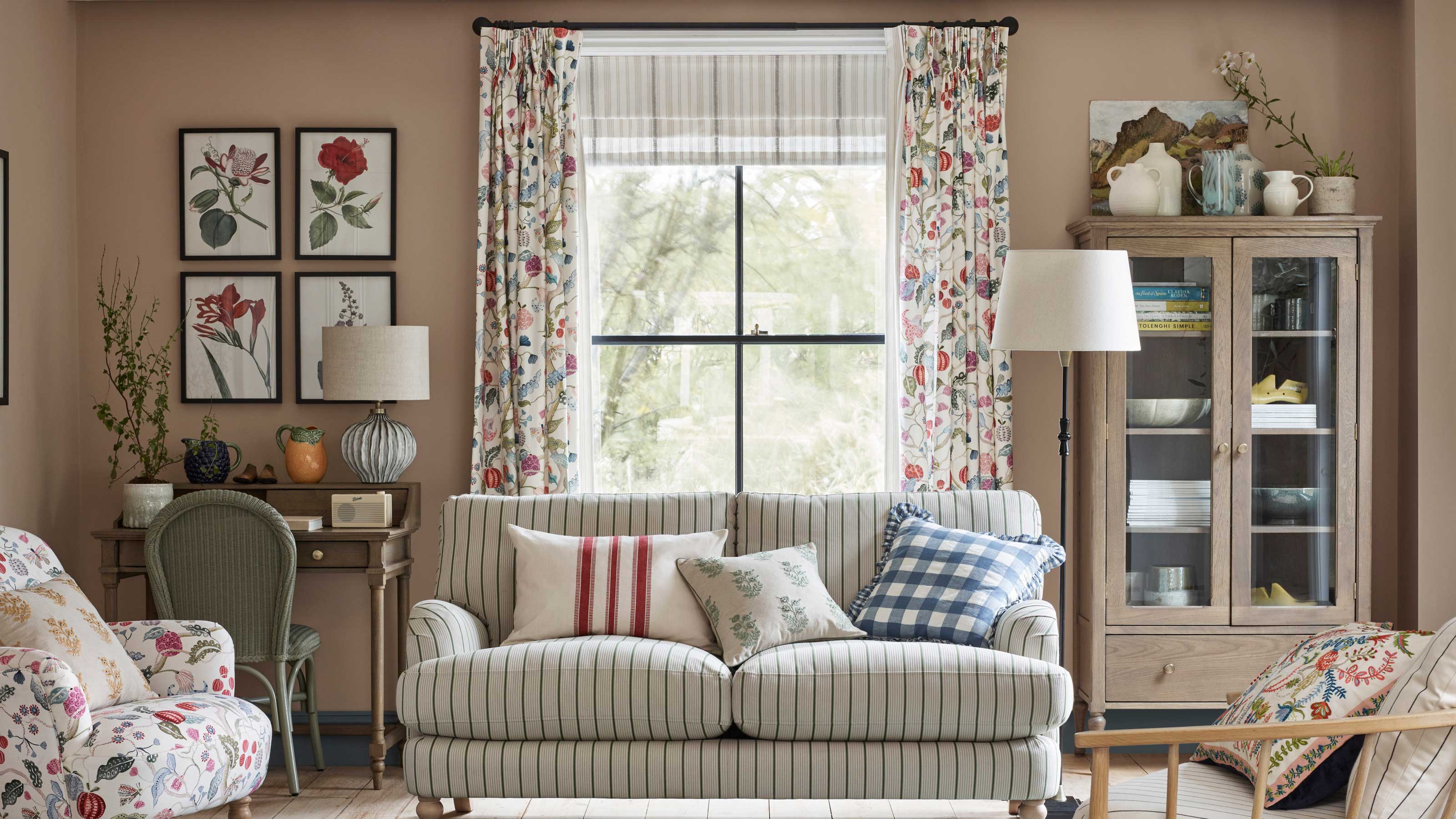
Lauren Bradbury
If you want to know how to measure for curtains, you’re already one step of the game. That’s because incorrectly fitted curtains can ruin the aesthetic of a room while also downgrading its energy efficiency. So, you need to get it right.
This is the case across the board, no matter whether you’re looking to dress a bay window with beautiful ceiling-to-floor curtains or finish off your lounge with one of the best living room curtain ideas. These window treatment ideas need to fit seamlessly into your space, no matter whether you opt for ready-made curtains or made-to-measure curtains.
However, this task can be daunting, which is why we’ve consulted with the experts to provide you with a quick and easy step-by-step guide on how to measure curtains.
How to measure for curtains
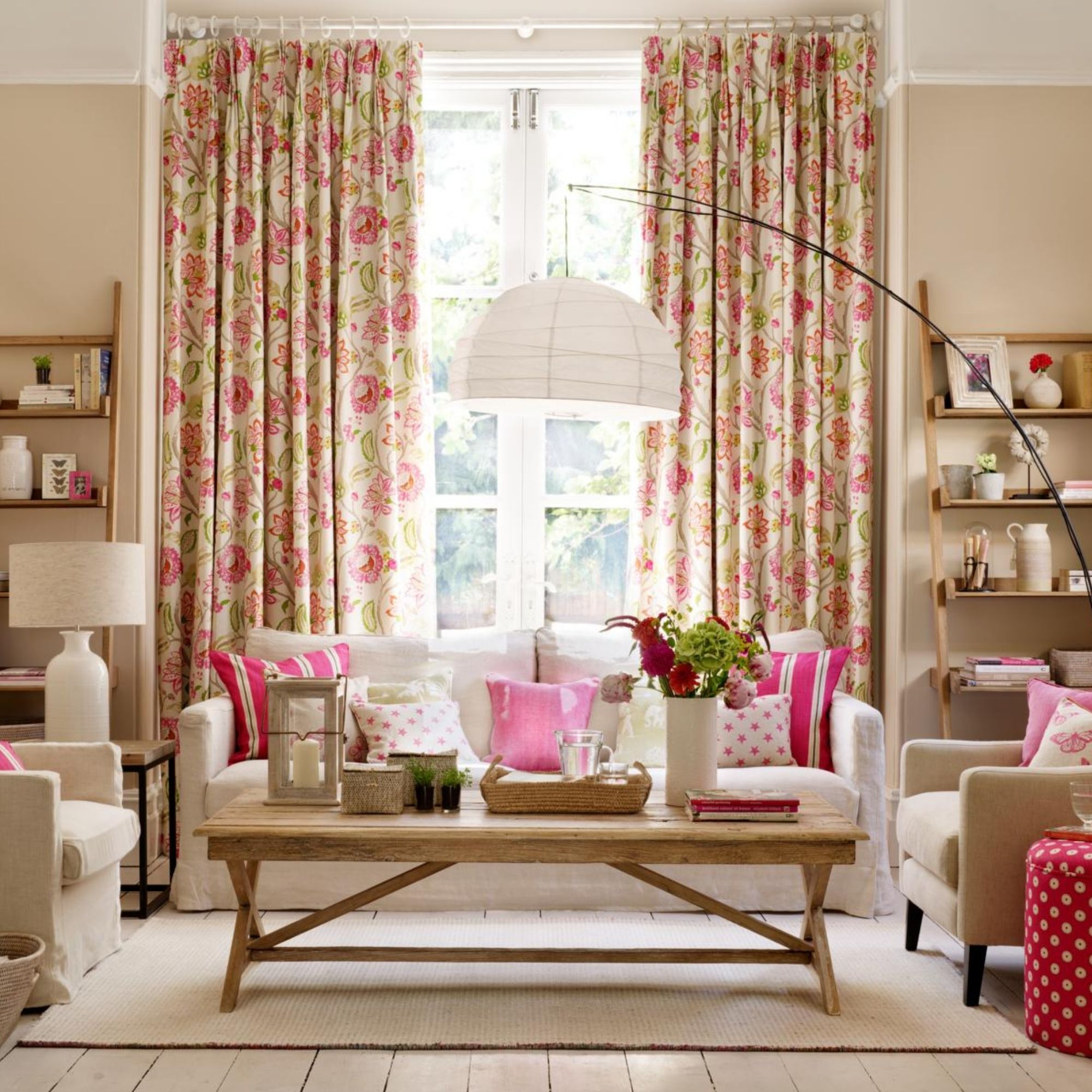
There is no reason to be worried about measuring your windows for curtains; it’s actually very straightforward. The only awkwardness is being able to reach your windows if the size and shape of them is very large.
Most windows are rectangular or square so the only measurements you need are the length and the width of the window. The only additional information required is the kind of fitting you favour, whether it be tracks or poles and how full you would like the curtains to be hung.
Generally, ready-made curtain ideas will come in standard sizes and if they are unlined allow you to adjust the lengths; all stores that sell curtains or fabric can advise on sizing and suitability of fittings, so as long as you have the basic measurements you can get started right away.
What you'll need
- Metal tape measure
- Pencil and paper
- Calculator
Step-by-step
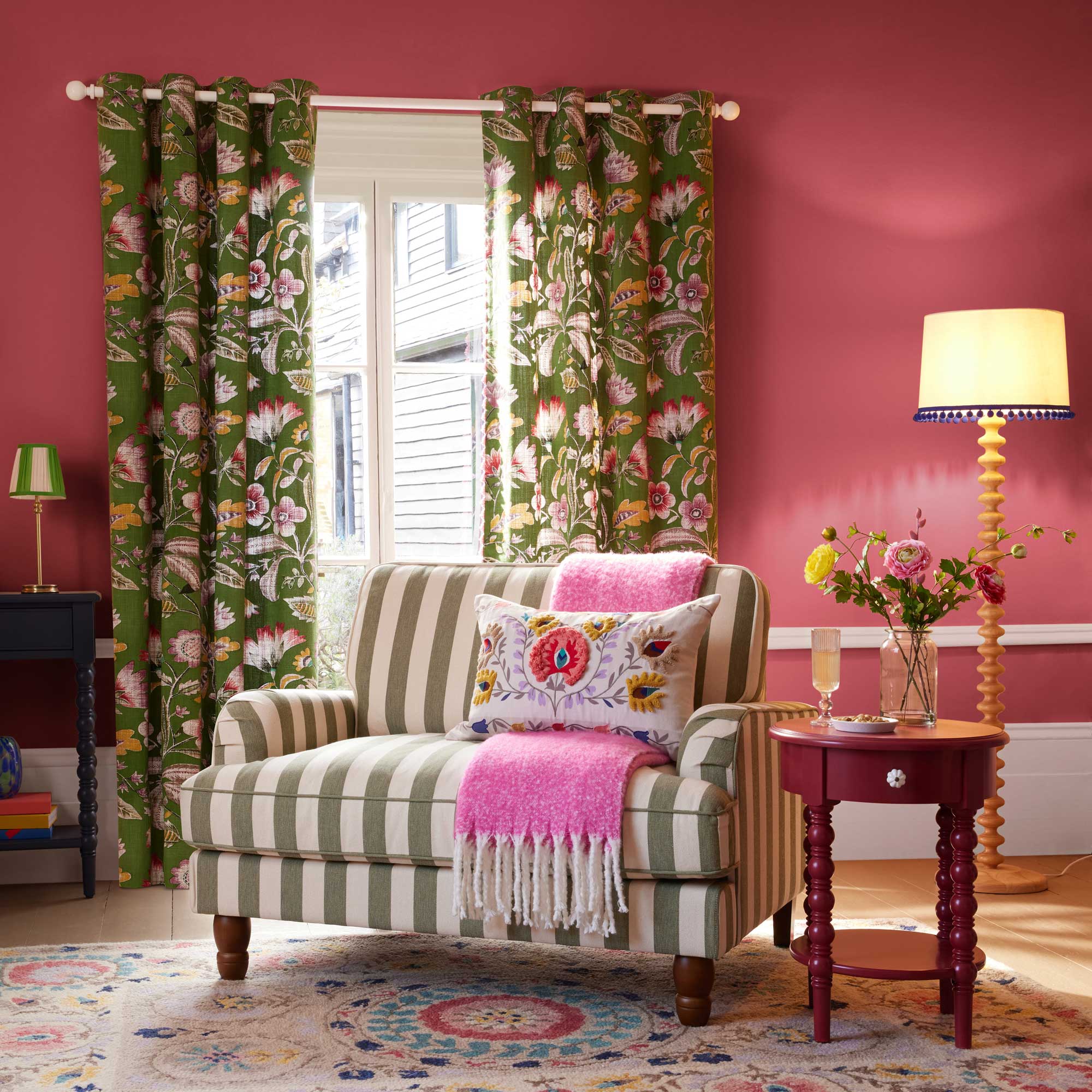
1. Gather your tools
Measuring curtains can be a fiddly job, so it’s best to gather your tools before you get started. And while you can’t measure curtains without a tape measure, it’s important to choose the right tape measure for the job.
Helen O’Connor, Product Manager at 247 Curtains, says ‘When measuring curtains, you only need to find the width and the drop. Use a metal tape measure as cloth and plastic tape measures can bend and stretch and provide inaccurate measurements.’
2. Where do you want to hang the curtains?
Take a look at your window and decide where you want the curtains to hang from. This may be dependent as to what is around your window. This could include a wooden or plastic frame, the proximity of other walls or the ceiling. Most long, flowing curtains look best on the outside of the window frame, hanging down the wall, allowing you the full length of your fabric.
If you have a recess (the area set back within the window) this may be better suited to blinds or light net curtains. Decide if you want to use a curtain pole or a track and check there are the right proportions and space to fix these fittings.
3. Ask for help
If your window space is very high, you will require some assistance, to read the tape measure and hold a step-ladder. It is preferable to put your fittings, such as poles and lines, up first in order to take accurate measurements. Bear in mind the fitting needs to be the width of the window plus a little extra area on either side for accommodating the fabric when it is pushed to the sides.
4. Make sure your measurements are accurate
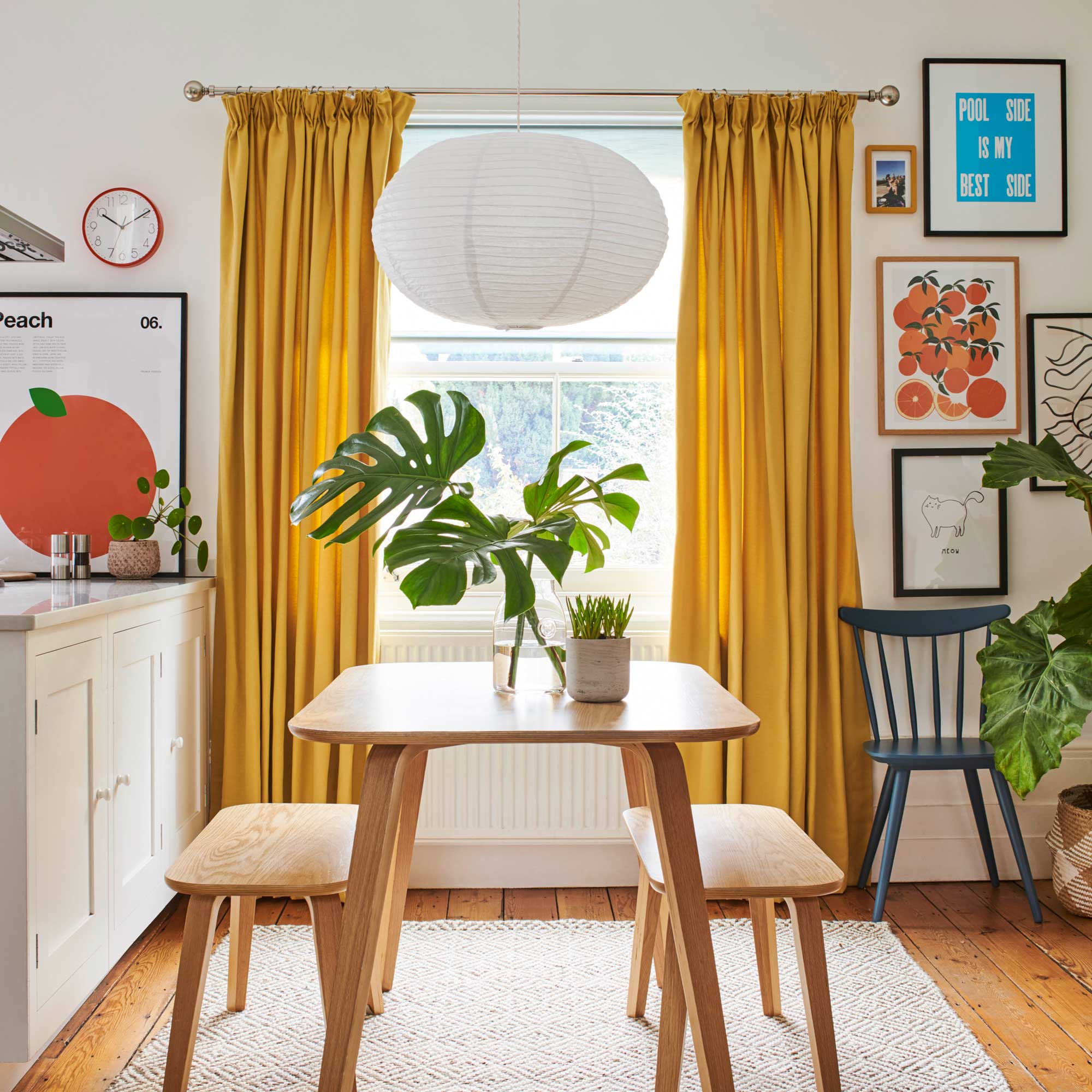
If you are using curtain poles, measure from the bottom of the curtain ring to the floor – this will give you the final drop measurement. The width measurement will be the length of the curtain pole, but don’t include the finials as these are just decoration.
With a track, the measurement should be taken from the top of the track to the floor and the width is the full length of the track across the window. For curtains with tab tops, the length will be from the top of the pole to the required length.
If you opt for curtains with a heading, bear in mind that the measurement needs to include the distance from the eyelet to where you want the top of the curtain to be. As a rule the heading looks better covering a track and poles need a heading height of about 2cm above the eyelet, to just above the pole, or just below the pole, depending on personal preference.
5. Consider all options
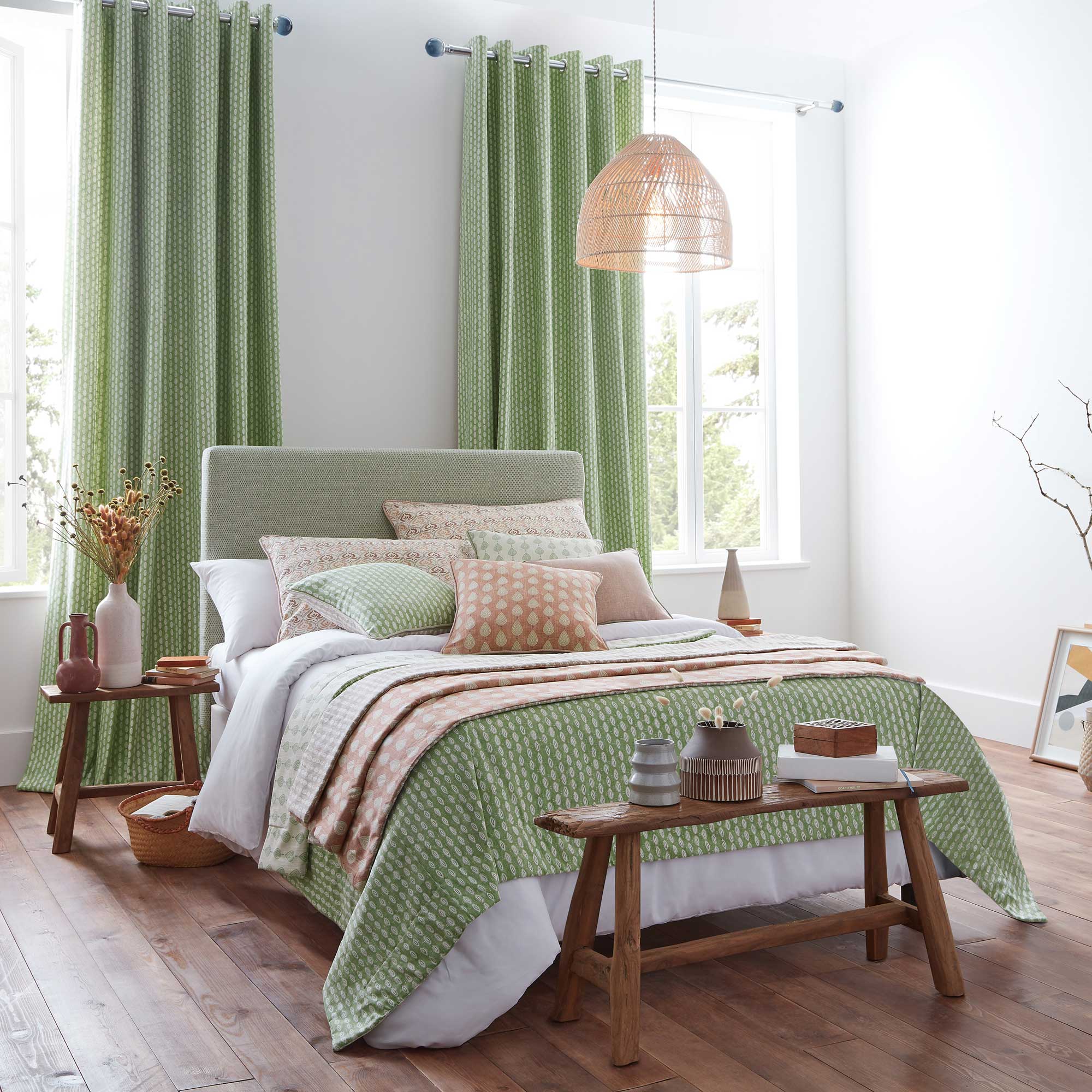
If you are opting to make curtains, bear in mind pattern repeats, most fabrics will list these details. The fullness of the curtains will be more dependent on the width of your window. Will the window space need two curtains or just one to sweep across the width?
Modest windows wouldn’t need much extra fullness, perhaps one and a half extra widths whereas larger windows may require up to two and a half extra widths of fabric. Most fabric is usually 137 - 140cm wide, plus you will have to calculate in pattern repeats and at least 25cm extra for the hems. All interior shops selling curtains can advise you on how much fabric to buy.
Ready-made curtains will be geared towards standard sizes and usually have a slight fullness. They are often unlined, so won’t necessarily offer as much warmth or privacy as those that are made-to-measure or self-made.
Why made-to-measure curtains could be the best option for you
While it’s very easy to measure curtains and find the right size on the shelf, it might work in your favour to ask the experts for some help.
Victoria Walker, Product Manager at Hillarys says, ‘There’s a time and a place for DIY, and while measuring and installing curtains yourself may seem like a straightforward task, there are numerous advantages to entrusting this to the experts.’
Thankfully, there are so many brands and companies out there that offer made-to-measure services that will make your life much easier - both for free and for a fee.
Almost every brand that offers curtains and blinds will offer their own free measuring guide when it comes to their products, as well as step-by-step instructions that will help you buy their made-to-measure products. Some even offer an all-inclusive service that stems from an initial consultation and measuring appointment to the overall fitting of the curtains.
This is incredibly handy if you want to save money on your energy bills, as they’re a great way to keep your house warm without turning the heating on.
Victoria says, ‘Properly fitted curtains can significantly improve your home's energy efficiency, especially during colder months. They act as an insulating layer for windows and doors preventing heat from escaping through windows, reducing your energy consumption and helping to lower your energy bills.’
Not only that, but many brands offer advisors who can offer guidance on the length of your curtains. This is especially important if you want to hang curtains near radiators.
Big brands such as Hillarys offer the full shebang, and while Blinds2Go doesn’t offer a fitting service, it does offer a ‘SureSize Measurement Guarantee’ so that you can claim a free replacement if your measurements aren't correct.
If you’re confident that you can measure your windows correctly, and you have some tools handy, made-to-measure blinds are easy to come by, too. Many affordable high street brands such as Dunelm and John Lewis now offer made-to-measure curtains that will be bespoke to your space, too.
However, what curtains you choose to measure for ultimately depends on your budget and your circumstances. Home decor expert Margaret Larson, from Sustainable Furniture, says, 'Made-to-measure curtains are designed to last a minimum of 10 years, whereas store-bought curtains will need replacing far more frequently. I highly recommend choosing made-to-measure curtains if you can afford the extra costs, they are a worthwhile investment and will eventually pay themselves off over a long period of time.'
'That being said, if you plan on living in your current home for a short period of time it may be more beneficial to buy high-quality store-bought curtains.'
FAQs
What is the proper height to hang curtains?
The proper height to hang full-length curtains is a crucial element in defining the aesthetics of your space.
Debbie Leigh design manager at ILIV explains. 'While it ultimately hinges on the specific ambience you aim to create, there's a fundamental rule of thumb: your curtain fabric should gracefully touch the floor, creating an elegant, tailored appearance.'
Current trends tend to lean towards full-flowing curtains that pile and gather at the floor and create an element of quiet luxury.
What curtain fabric to choose?
Knowing which fabric design to choose is more of a tricky dilemma, but if you’ve done a mood board this may ease the decision as to the type and shade of the material.
Take a good look at the position of the window within the room; smaller windows will obviously require less elaborate dressing. Larger windows can happily accommodate heavier materials and fuller swags.
If the overall look of your room is quite calm, plainer, more natural fabrics can come into their own. Opting for more timeless designs is sometimes a better idea, particularly if you are having curtains made, you may have to live with them for a long time, so classic designs will adapt to any changing room plan.
Alternatively curtains can be the one show-stopping element, a strong motif or print can make a subtly decorated room really come alive. Resist the temptation to have too many prints in one room. If the room features a busy wallpaper consider trying plain curtains to tone it down – reflecting the shades and patterns of the room with cushions rather than with the curtains.
Plain curtains certainly aren’t dull, the texture of a fabric can be equally as important as the colour. Imagine sumptuous velvets, crisp linens and luxurious silks, the beauty of modern fabrics now is that they come in user-friendly practical mixes, ideal for all style curtains.
How do I know what size ready-made curtains to buy?
Generally, read-made curtains are sold in pairs and the sizes stated refer to the size of each curtain as width x drop.
To calculate the size of the curtain you require, Steven Ban Fabrics recommends that the total width of the curtains should be no less than one and a half the width of your window. To achieve a full and luxurious look, SBF suggests increasing the fullness to double the width of your window.
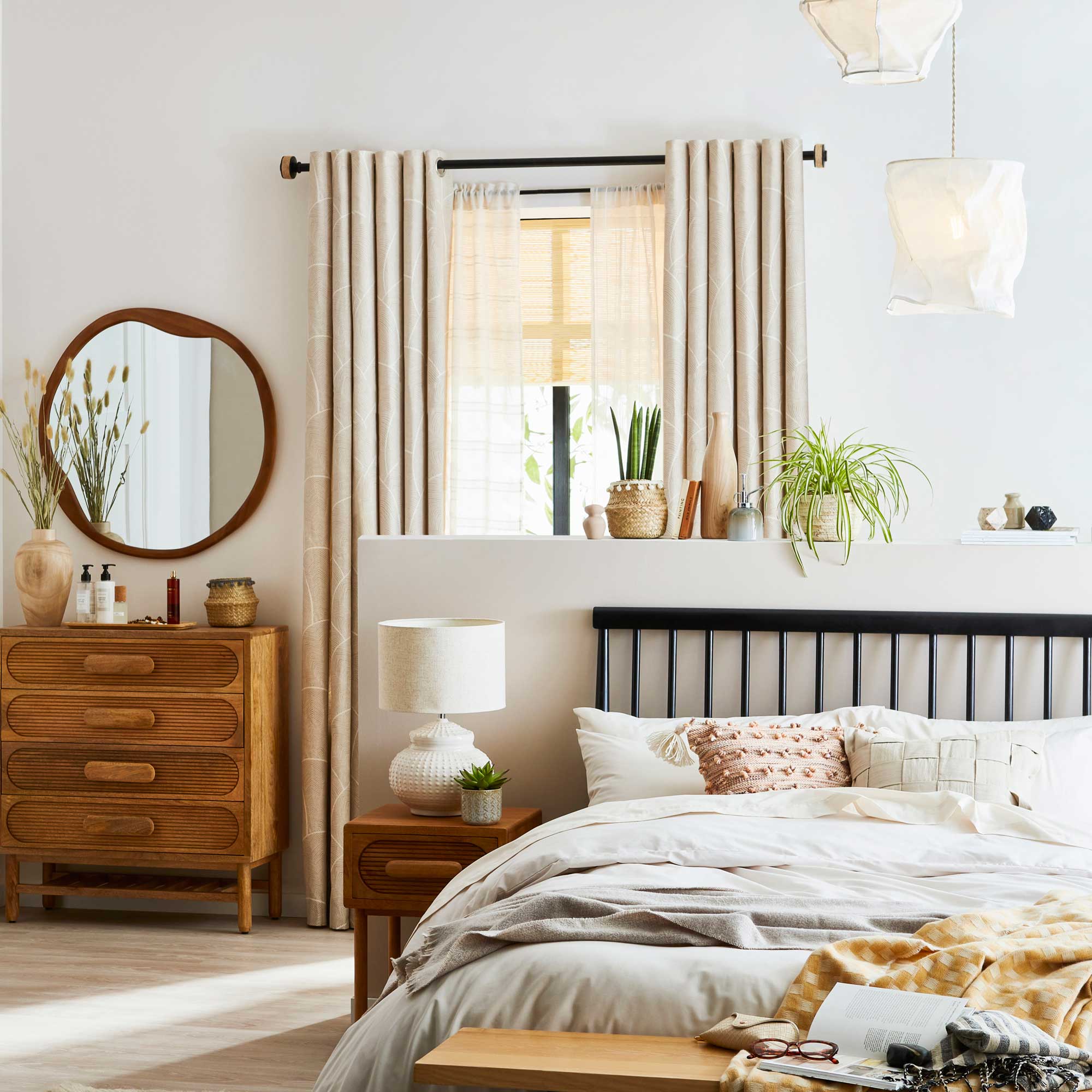
What types of curtain length are there?
Windowsill curtains sit about 1cm above the windowsill.
Apron curtains come down below the windowsill and are good for heat retention.
Floor-length curtains drape down to the floor and generally sit about 1cm above the floor.
Puddle curtains are usually 1-3 inches longer than floor-length curtains
With all of this in mind, you should have no problems measuring your curtains for your home.
Get the Ideal Home Newsletter
Sign up to our newsletter for style and decor inspiration, house makeovers, project advice and more.
Jennifer is the Deputy Editor (Digital) for Homes & Gardens online. Prior to her current position, she completed various short courses a KLC Design School, and wrote across sister brands Ideal Home, LivingEtc, 25 Beautiful Homes, Country Homes & Interiors, and Style at Home.
- Lauren BradburyContent Editor (House Manual)
-
 Will a conservatory add value to your home and how can you maximise it?
Will a conservatory add value to your home and how can you maximise it?This is what the pros say
By Amy Reeves
-
 I’ve been looking for a new signature scent for my home and The White Company's new fragrance is the exact summer holiday smell I needed
I’ve been looking for a new signature scent for my home and The White Company's new fragrance is the exact summer holiday smell I neededSantorini smells fresh, summery and sophisticated
By Kezia Reynolds
-
 How to remove algae from garden walls in five steps – and the cleaning product experts rave about for tackling it fast
How to remove algae from garden walls in five steps – and the cleaning product experts rave about for tackling it fastExperts share their top tips for getting garden walls algae-free
By Katie Sims